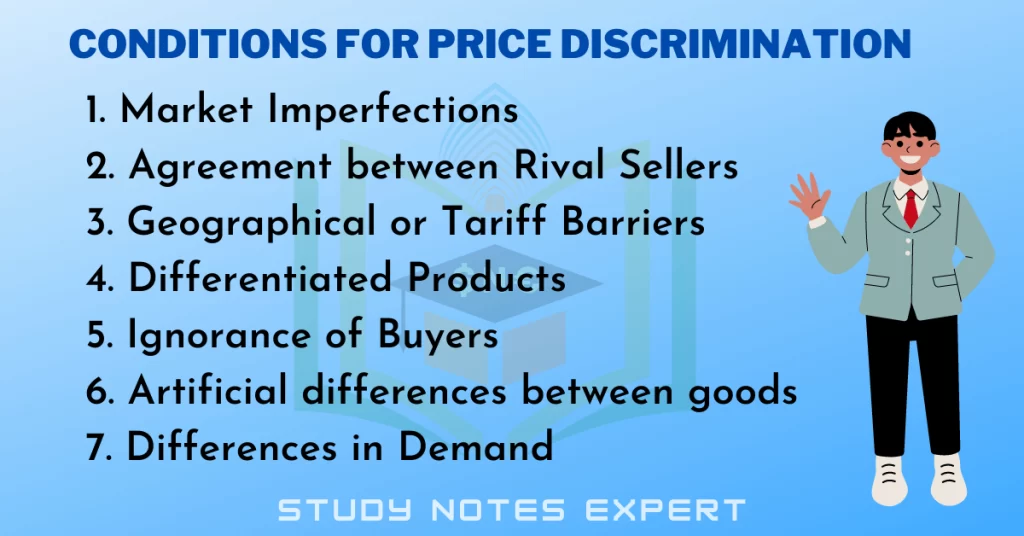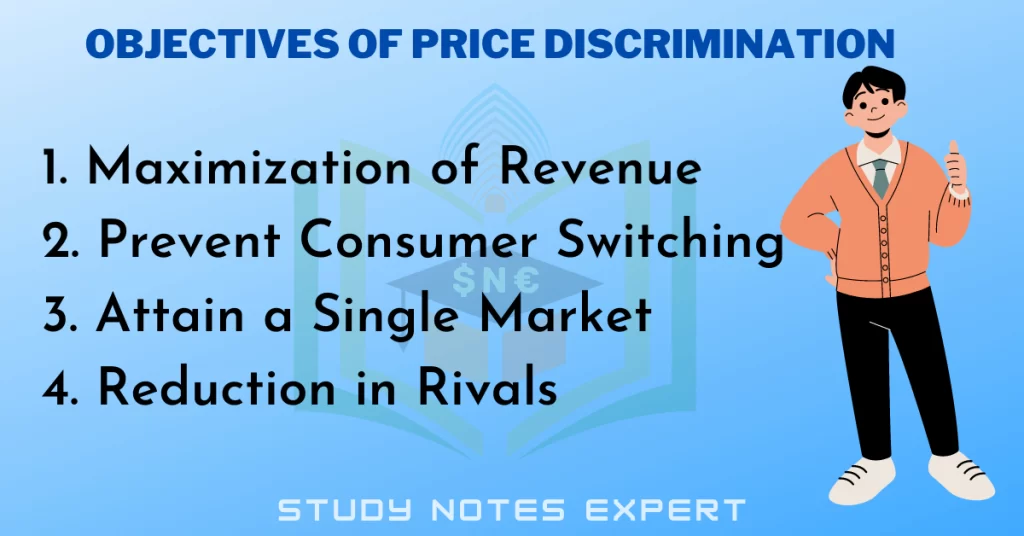If the buyers are from different markets or are part of so-called non-competing groups, monopolists might charge different rates for the same products from these markets. Price discrimination and discriminatory monopoly describe the situation. Price discrimination is the practice of charging different prices to customers with varying quantities of the same item.
Definition of Price Discrimination
As per Mrs Joan Robinson, “Discriminating monopoly or price discrimination is charging different prices for the same product or same price for the differentiated product”.
Avoiding customers from switching to a less expensive product could be differentiated by appearance, time or even place of purchase. The product is identical but may show small or insignificant distinctions.
For instance, a cinema, for example, costs differently based on where you are seated; however, the same film is being shown simultaneously for all patrons at the exact cost. Yes, the facilities differ for different classes. However, they’re generally not in line with the cost distinctions.
Conditions for Price Discrimination

Price discrimination is only possible with the following condition fulfilment:
1. Market Imperfections
Price discrimination is possible if there is a certain degree of market inefficiency. The seller can separate and maintain his market segment only if the market is insufficient. It is one of the main conditions for price discrimination.
2. Agreement between Rival Sellers
Price discrimination can also occur if the supplier of a product is a monopolist or when competitors sign an agreement to sell their product at different prices to various customers.
3. Geographical or Tariff Barriers
Discrimination could rely on geographical reasons. Monopolists can differentiate between foreign and domestic buyers by offering a lower cost on markets outside the country than local markets. It is important conditions for price discrimination.
4. Differentiated Products
Differentiation is possible when buyers require the same service with different products. Railways charge different prices for transporting copper and coal.
5. Ignorance of Buyers
Also, small-scale manufacturers offer goods to the order of customers. They will charge different prices for different buyers based on the level of demand for the item.
6. Artificial differences between goods
A monopolist could create artificial distinctions by offering the same product in different amounts. He can present it under various labels and names, one for the wealthy and wealthy and another one for ordinary buyers.
7. Differences in Demand
To be able to discriminate in price, the demand in the different markets should be significantly different. Due to differences in demand elasticity, a seller may charge extra fees in various markets.
Objectives of Price Discrimination

There are a few objectives of price discrimination:
1. Maximization of Revenue
The price differential’s primary goal is setting different prices on the exact product across different segments or markets. The business will be able to increase the total revenue from sales. Price discrimination is definitely for the benefit of companies that make more money. A monopoly that discriminates is stealing excess consumer spending and transforming it into a supernormal amount of profits. However, companies shouldn’t be solely motivated by the desire to increase profits. A business will maximize its earnings if it can get from each client the most money the customer will be willing to pay.
2. Prevent Consumer Switching
A dominant company may “exploit” final consumers by using price discrimination, resulting in a diminution of consumers’ welfare. It’s a hurdle to stop consumers from switching between suppliers. The company must stop this “consumer switching” process whereby customers who purchase the product at a lower price can then sell the product to consumers who otherwise would have bought the product at a higher cost. Prevent consumer swithching is the objectives of price discrimination.
3. Attain a Single Market
It can be an objective of the government to create one market in the entire region since only one product vendor is subject to the monopoly system. This firm is also in monopoly in the industry itself. Thus the demand curve of its product slopes downwards to the right, based on the preferences and earnings of its clients. It is a price maker that can determine prices to maximize its profit.
4. Reduction in Rivals
A dominant company may employ price discrimination to deter potential or actual competitors. Price discrimination could also be helpful as a tactic to slash prices to thwart competition, i.e. pricing prices lower than the cost to specific customers to hinder competitors at the level of the supplier and thus increase a company’s market power.
What is Price Discrimination Under Monopoly?
Price discrimination under monopoly is a pricing strategy in which a monopolist firm charges different prices to different groups of consumers for the same good or service. The monopolist firm does this in order to maximize its profits by exploiting the differences in the willingness to pay for the good or service among the different groups of consumers.
What are the 5 Conditions for Price Discrimination to Exist?
1. There must be more than one market segment.
2. The market segments must be differentiable.
3. The firm must have some market power.
4. The firm must be able to prevent resale.
5. The firm must be able to charge different prices to different segments.
What are the Effects of Price Discrimination?
Price discrimination can have a number of different effects.
1. It can lead to increased profits for the company that is engaging in price discrimination.
2. Also, there are increased prices for consumers.
3. Additionally, it can lead to a decrease in overall market demand, as well as a decrease in the level of competition in the market.


Wonderful blog! I found it while surfing around on price Discrimination.
I have get proper and valuable information here.